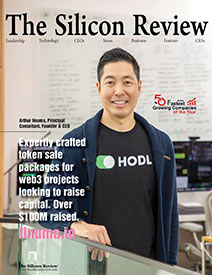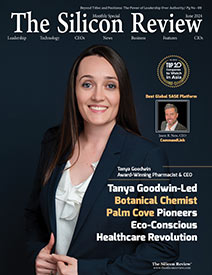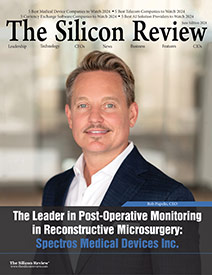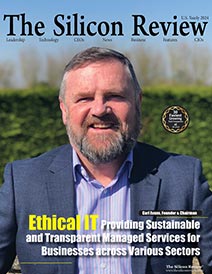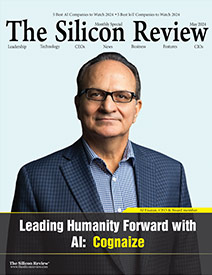50 Most Admired Companies of The Year 2019
Prescient Co. : Revolutionizing the Building Environment and Providing Attainable Housing to all
The Silicon Review
![]()
“On one of our first mid-rise 12 story projects with one of the country’s largest developers, the city of Denver changed a senior executive within the building permit department for residential buildings just as we broke ground.”
Despite a booming economy America is suffering from a genuine housing crisis. Over 50% of Americans spend more than 30% of the income on housing costs, which is the rate that defines affordable housing. Surging demand and construction costs which have been 4x the rate of consumer inflation has meant that apartment rents, dorm rents and senior living rents have been increasing significantly faster than wages and inflation. The housing industry needs to discover new ways to build to help solve this challenge facing millions of Americans.
Given the preceding, we are delighted to present Prescient Co.
Prescient leverages technology to design, manufacture and assemble high quality multi-unit residences much faster, less expensively with much less waste than traditional methods. Prescient currently serves clients in the United States with plans to expand internationally in 2021.
The company was founded in 2012 and is headquartered in Mebane, North Carolina.
Magued Eldaief (CEO) and Satyen Patel (Executive Chairman), Prescient Co. Leadership, spoke exclusively to The Silicon Review. Below is an excerpt.
What is the reason behind the genesis of your company?
Prescient was founded to significantly improve the way multi-unit residences were built in our quest to deliver ‘attainable housing for all.’ Construction has lagged other industries on its deployment of digital technologies and advanced manufacturing methods. Prescient developed a Building Information Modeling (BIM)-based digital thread which operates across the design, manufacturing and assembly stages of major multi-unit residential projects.
What challenges did you face in your initial years?
Construction is an industry where companies are very slow to embrace new technologies or methods. We needed to demonstrate the benefits of our system in a few different ways. For instance, we did one early project for NBC news to prove how fast and efficiently we could build a single-family residence. We built the structure for that house in one day and people became intrigued.
The first 10 projects we did were all financial busts before they approached us. The developers could not make the financials work. Our solution provided a happy medium while making the P&L for the project work, for each of those 10 projects. We were able to provide higher density than wood but at a lower
cost to concrete.
How successful was your first project roll on? Please share the experience.
On one of our first mid-rise 12 story projects with one of the country’s largest developers, the city of Denver changed a senior executive within the building permit department for residential buildings just as we broke ground. The earlier regime had researched and analyzed our system, then granted us the approvals we needed. We also ran into problems with our flooring system when a developer did not follow our standards and protocol and in their internal value-engineering process compromised quality for cost and used a less expensive finishing material. It resulted in unsatisfactory floors which we had to replace. This was another setback for us as we worked to earn our large customer’s endorsement.
Building a culture of sustainability inside an organization is very important to maintain a reputation in the global market. How is it true for your company?
Our initial promise for Prescient was faster, better, greener and cheaper. Being environmentally beneficial to the construction process has been a core promise for our company and our system. Our buildings typically weigh 50 to 65 percent less than their concrete equivalents which means they require significantly less CO2 to produce. Our overall approach to digital design and precision manufacturing means our projects experience significantly less waste. We are currently building the largest student housing project in North America which is also part of the largest planned net zero energy project in the US.
Is your company a leader or follower?
All companies are creatures of their own culture; our’s revolves around constant innovation. Prescient is undeniably a leader in its segment. Our technology moat is solid. We have 87 patents in over 30 countries and 54 more patents on file. Our patents cover our product, our process, our system and we copyright our software. We created this company to serve individuals’ housing needs and to make construction more efficient. We are continuously presenting our vision and approach to leading forums in the country.
‘Leaders cannot optimize results by themselves; they need employees’ support and assistance.’ How does your company interpret this saying?
Great ideas come from anywhere and we are fortunate that we have a young and energetic leadership team and employees that have built this company from the ground up. Our strength comes from them and the diversity we have within our organization. We have 20 different nationalities as an example within our company across our operations in the US and Europe and we truly believe that giving every one of those employees a voice gives us a competitive advantage.
If you have to list five factors that have been/are the biggest asset to your organization, what would they be and why?
- An unwavering belief in our vision of “attainable housing for all” and our mission to “revolutionize the building environment”,
- Commitment to invest in our technology platform to digitalize construction end-to-end,
- A simple focus on time, cost, and risk at every stage of the construction value chain to
achieve massive savings supporting our attainability vision, - A loyal following of customers, employees, and investors who took a chance on us and are
now realizing the benefits, - World-class leadership team with diverse experiences to change the face of the industry.
What do you feel are the reasons behind your company’s reputation?
Reputations get built up over time and it is no different for us. When you are innovating, you are bound
to not get everything right. We give first priority to our customers in business and work tirelessly to address their concerns and needs. We are upfront when we fall short and improve our processes and our technologies, so we don’t make the same mistakes again. Now that we are consistently demonstrating
our impact on time, money, and risk at every stage of the evolution of a project, our reputation is growing by the day.
Where do you see your company a couple of years from now?
We are very excited about the future of Prescient. In a couple of years, we expect that our platform will be widely adopted in the US and internationally in all sectors of multi-unit housing. Critically, we expect to have been a major part of the solution for the housing crisis that is being experienced in cities and countries around the world. We are very excited to make housing construction a more collaborative, affordable and profitable endeavor for developers, general contractors, architects, and building trades companies globally.
Leaders Behind the Wheel
Magued Eldaief is the Chief Executive Officer of Prescient. He joined the firm as CEO in June 2017. A 27-year GE executive, he most recently led the global commercial operations of the $4B Industrial Solutions business of GE which includes Low Voltage, Medium Voltage, Control & Automation Products & Services. Magued earned B.Sc. in Mechanical Engineering from the American University in Cairo in 1987 and holds a Master’s degree in business application from Rensselaer Polytechnic Institute in Troy, New York.
Satyen Patel, founding investor, serves as the Executive Chairman of Prescient. He brings a wide range of business experience to the company.
“Prescient uses the power of technology to link the discrete disciplines of architectural design, engineering, manufacturing, and assembly.”





